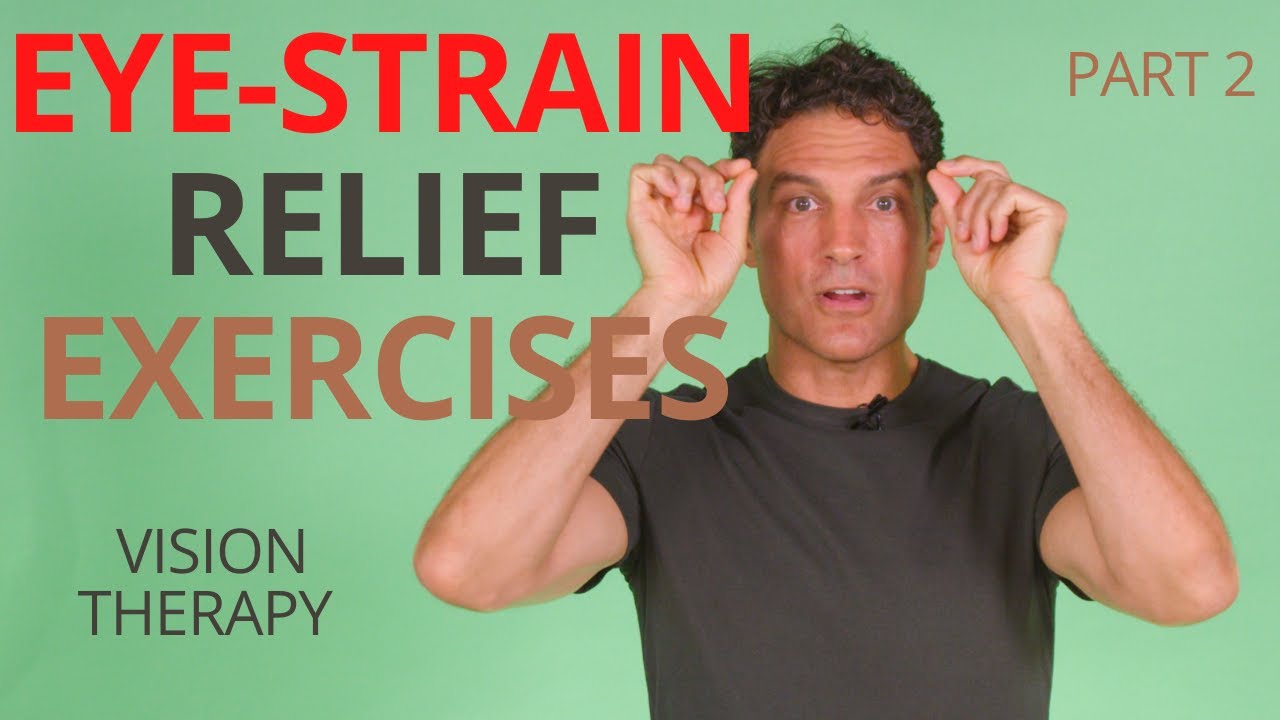In today’s digital age, the prevalence of screens has led to a corresponding increase in reports of eye strain, particularly among younger audiences. This phenomenon, often referred to as computer vision syndrome or digital eye strain, manifests through a variety of symptoms including dryness, irritation, and visual fatigue. Eye strain relief exercises can serve as an effective strategy to mitigate discomfort and promote ocular health, merging both traditional wisdom and contemporary understanding of eye care. This article delves into the therapeutic potential of eye exercises, offering a comprehensive examination of their efficacy and instructions for implementation.
Recognizing the Symptoms of Eye Strain
The digital milieu presents numerous challenges for ocular wellness. Adolescents and young adults often find themselves engaged in lengthy periods of screen time, whether for educational platforms, gaming, or social interaction. This habitual exposure prompts a spectrum of symptoms frequently associated with eye strain. These include, but are not limited to:
- Persistent dryness or grittiness in the eyes
- Blurred or double vision
- Difficulty focusing
- Headaches or migraines
- Sensitivity to light
Understanding the physiological response to prolonged screen use elucidates the importance of slowing down and implementing preventative measures. The eye’s natural mechanism involves a constant blink rate that diminishes with intense concentration on digital interfaces, leading to reduced ocular hydration and discomfort. Thus, recognizing the onset of symptoms is the first vital step toward alleviating eye strain.
The Science of Eye Exercises
Scientific research bolsters the argument for incorporating eye exercises into daily routines. These practices aim to enhance the motility and flexibility of the ocular muscles, promoting overall eye health and alleviating strain through strategic engagement. A multifaceted approach is required to harness the full benefits, combining acupressure, massage techniques, and focused visual tasks.
Eye exercises are predicated on the principles of muscle relaxation and neurovascular health. When the ocular muscles are exercised, they gain strength and adaptability, reducing the likelihood of fatigue. Moreover, these exercises can stimulate blood flow to the eyes, yielding an increase in nutrients essential for ocular well-being. Each exercise can be performed independently, making it accessible regardless of one’s environment.
Essential Eye Strain Relief Exercises
Incorporating specific eye exercises into one’s daily regimen can yield considerable benefits. Here are several exercises designed to alleviate strain effectively:
Palming Technique
Begin by rubbing your palms together until they create warmth. Close your eyes and gently cup your palms over them without applying direct pressure. Maintain this posture for approximately 30 seconds. This technique helps to rejuvenate tired eyes and promotes relaxation. The warmth of your palms can soothe the eye muscles, mitigating discomfort.
20-20-20 Rule
A cornerstone of ocular health strategies, the 20-20-20 rule encourages individuals to divert their gaze every 20 minutes to something located 20 feet away for a duration of 20 seconds. This simple yet effective technique reduces cumulative stress on the eyes by allowing them to refocus and relax, mitigating the fatigue wrought by sustained screen time.
Eye Rolling
Eye rolling is a straightforward procedure that involves rotating your eyes in a circular motion. Start by looking to the right, then move your eyes in a circle—clockwise and then counterclockwise—repeating this sequence five times in each direction. This exercise helps to enhance flexibility and strengthen the muscles that control eye movement.
Focusing Exercise
This exercise requires you to hold a pen (or any object) at arm’s length. Carefully focus on it, and then switch your focus to an object located further away, ideally over 20 feet away. Alternate your focus between the two points for about 10 repetitions. This method sharpens your focusing abilities, counteracting the effects of digital strain.
Integrating Acupressure for Enhanced Relief
In addition to conventional eye exercises, acupressure is gaining traction as an alternative therapeutic approach to manage eye strain. Grounded in traditional Chinese medicine, acupressure utilizes pressure points to stimulate physical well-being and can provide significant relief. Key points include:
Yintang Point
Located between the eyebrows, applying gentle pressure for 1-2 minutes can ease tension and promote relaxation. This point is often utilized in stress relief protocols and can reduce eye fatigue.
Temples Pressure Points
The temples, situated at the two sides of the forehead, can be activated with circular massages. Spending a few moments here can alleviate headaches commonly associated with eye strain, fostering an overall sense of well-being.
Conclusion: Proactive Measures for a Healthier Vision
In the face of increasing digital dependence, incorporating eye strain relief exercises into daily practices becomes a necessity. Engaging in these activities, alongside conscious awareness of screen time and proper ergonomics, plays a pivotal role in sustaining ocular health among younger individuals.
It is paramount to recognize the importance of balance; taking frequent breaks, optimizing your environment, and fostering healthy screen habits can safeguard against the pitfalls of prolonged digital exposure. By implementing these exercises and techniques, individuals can not only alleviate current strain but also potentially prevent the development of more serious ocular conditions as they journey through their formative years amidst a technology-dominated landscape. The efficacy of these practices underscores the idea that care and attention, paired with an understanding of one’s body, can yield substantial benefits in maintaining eye health among today’s youth.
